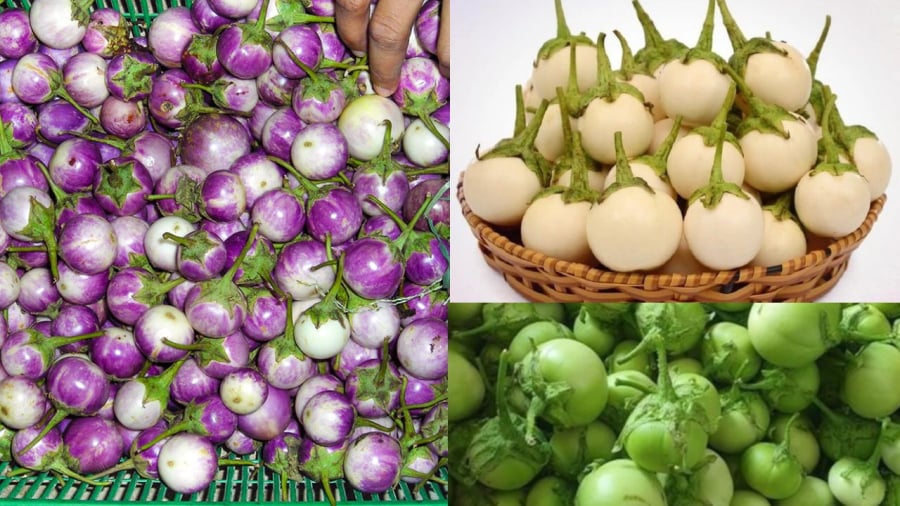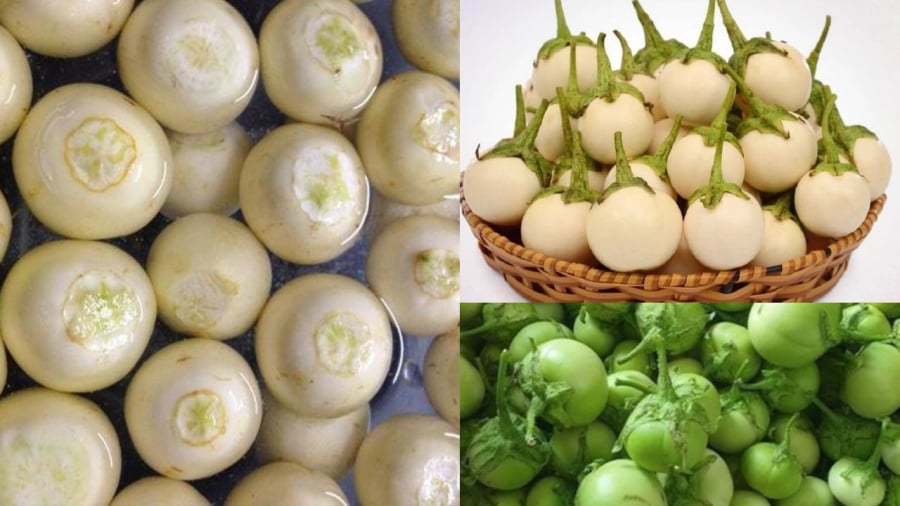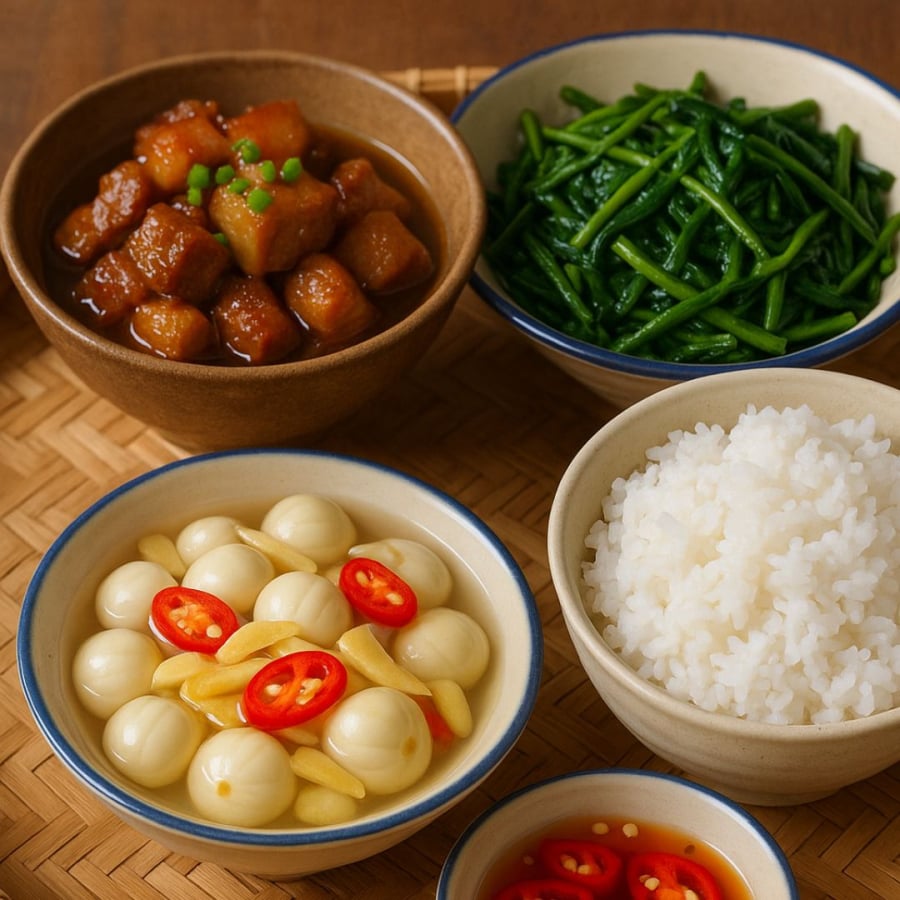Pickling baby eggplants is an art form in Vietnamese cuisine. While it may seem simple, achieving the perfect crisp, white eggplants without any mold or discoloration requires skill and attention to detail. Many people attempt to pickle eggplants regularly, but often end up with soft, discolored, or moldy results. So, how do you pickle baby eggplants the right way, ensuring they turn out perfectly “white, crisp, and mold-free”? Discover traditional pickling tips and tricks in this article!
1. Choosing Fresh Baby Eggplants: The Key to Success
The first step to delicious pickled eggplants is starting with quality ingredients:
Select round, evenly shaped baby eggplants that are not too young or old. Very young eggplants tend to soften easily, while older ones have larger seeds and lose their crispness.
Look for eggplants with a milky white color and a shiny skin, free from any bruises or damage.
If possible, choose eggplants during the summer season, when they are at their crispest and naturally sweeter.

2. Soaking Eggplants in Brine and Vinegar: The Secret to Crispness and Color
After washing the eggplants, trim the stems and cut them in half (or leave them whole if you prefer). Immediately soak them in a brine solution of water, a small amount of vinegar or lemon juice to prevent discoloration. Soak for about 20-30 minutes.
The addition of vinegar or lemon juice serves multiple purposes:
It helps keep the eggplants white and aesthetically pleasing.
It reduces the bitterness of the eggplants by removing some of their natural latex.
It has a mild antibacterial effect, reducing the chances of mold forming on the pickled eggplants.
After soaking, rinse the eggplants with clean water and let them air dry thoroughly. The drier the eggplants are, the crispier they will be after pickling, and the less likely they are to spoil.

3. Preparing the Perfect Pickling Brine
The ideal ratio for pickling brine is:
For every liter of water, use 40-50 grams of large-grain salt (about 2-2.5 tablespoons). You can also add 1-2 tablespoons of sugar to enhance the flavor and speed up the natural fermentation process.
Bring the brine to a boil and allow it to cool completely before adding the eggplants.
Note: Avoid using iodized salt, as it can make the eggplants soft and promote mold growth. Opt for pure crystal salt or coarse sea salt instead.
4. Using Clean and Dry Utensils
This is an important, often overlooked step:
Use glass or ceramic containers for pickling, ensuring they are absolutely clean and dry before use. Avoid plastic containers, as they can harbor bacteria and cause the eggplants to spoil quickly.
Sterilize any tools used for pressing or weighting down the eggplants (bamboo mats, clean stones, etc.) by boiling them in water.
Maintaining cleanliness reduces the presence of harmful bacteria, preventing mold and unpleasant odors.

5. Properly Packing and Weighting the Eggplants
Once the eggplants and brine are in the jar, use a weight to keep the eggplants submerged. If they float to the surface, they may turn dark and moldy:
Use a bamboo mat or similar tool to press the eggplants down.
Place a clean plastic bag filled with brine on top to add extra weight.
Alternatively, use clean stones or ceramic weights to keep the eggplants submerged.
Just ensure the eggplants remain below the brine surface.
6. Storing in a Cool, Dry Place Away From Direct Sunlight
Store your pickled eggplants in a cool, dry place, away from direct sunlight. Excessive heat will cause rapid fermentation, leading to spoilage. During the first 2-3 days, check for any signs of bubbling or white scum forming on the surface. If present, gently skim it off with a clean spoon.
7. Signs of Successfully Pickled Baby Eggplants
After 3-5 days (depending on the weather), the eggplants will turn a pale yellow color and emit a mild fermented aroma. When eaten, they should be:
- Crisp and not mushy.
- Naturally sour, without any unpleasant odors.
- Free from mold or scum.
At this point, you can store the jar of eggplants in the refrigerator to prolong their crispness.
8. Quick-Pickling Tip for Faster Fermentation
If you want to speed up the fermentation process, try one of these methods:
Add a few slices of pineapple or a few grains of cooked rice to the jar.
Use brine from a previously pickled batch to introduce natural fermentation.
These techniques will accelerate the pickling process without resorting to chemicals, preserving the traditional flavor.
Pickling baby eggplants may seem straightforward, but achieving the perfect result requires attention to detail at every step, from ingredient selection to cleaning, brine preparation, and storage. With the traditional pickling tips shared in this article, you’ll be well on your way to creating delicious, crisp, and mold-free pickled baby eggplants to complement any meal.
Good luck, and enjoy the fruits of your labor!

































